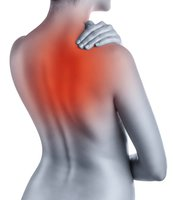 7th Dec 2015
7th Dec 2015
How To Treat Radiating Pain to Avoid Reoccurence
Pain can be a common occurrence in everyday life. Aches and pains are a natural byproduct of living an active life.
Radiculitis is referred pain or traveling pain that is commonly experienced with patients that have chronic neck and low-back pain. Radiculitis can create even more problems for patients making it more difficult for them to live their day to day lives. Back pain is the leading cause of disability, with neck pain accounting for 15-30% of disabled workers. It becomes important for patients experiencing radiating pain to seek treatment that will decrease the pain and allow them to participate in their day-to day activities and return to work.
Who is at risk for radiating pain?
Office workers who do most of their work at a desk on a computer are at a high risk of developing sciatic and neck pain, due to the increased pressure on the sciatic nerve and the difficulty in maintaining good posture throughout the day. Workers who spend more time on their feet are also at risk for radiating pain due to the pressure on the legs and feet and the difficulty maintaining good body mechanics when working.
How to treat radiating pain?
Physical therapists and chiropractors are able to help treat radiating pain, though with different methods. In addition to manual therapy, joint mobilizations and manipulations, radiating pain may be treated with a variety of modalities that will help reduce inflammation, improve range of motion and decrease the incidence of nerve pain.
- Cold Compression therapy: Cold compression therapy combines the benefits of ice (decreases pain) with compression (decreases edema and swelling) making a powerful treatment for radiating pain. With the variety of wraps available, cold compression therapy can treat radiating pain in the neck, shoulder and low back.
- Ultrasound therapy: Studies show that ultrasound therapy is effective in decreasing pain, increasing function and enhancing cartilage repair. Ultrasound produces sound waves which are converted into heat within the tissues improving circulation by causing the blood vessels to open and allows oxygen to be delivered to radiating pain areas.
- Therapeutic Exercise: In addition to stretches that relieve pressure on nerves, it’s important for patients to have strengthening exercises which will help them maintain proper posture while they’re working and going about their day. Chin tucks and diagonal upper trapezius stretches are two commonly used to help with radiating neck pain, while bridge and piriformis stretches are often used for radiating sciatic pain.
- Traction: Using an inverse table, traction table or performing manual traction of the spine is also effective in relieving pressure on the compressed nerves creating the radiating pain. It’s important to follow up the use of this modality with strengthening in order for patients to become able to maintain proper posture.
- Electrical Stimulation: Electrical stimulation provides pain relief by helping relax tight or spasming muscles. Causing the muscles to contract breaks up the spasm cycle while the stimulation gives the body an opportunity to react differently than it does when the nerve is compressed.
Radiating pain can be debilitating; from making it difficult for patient’s to walk to causing migraine headaches. When treating for radiating pain, it’s important to decrease the radiating pain and its symptoms, but also increase the patient’s ability to avoid it in the future.






